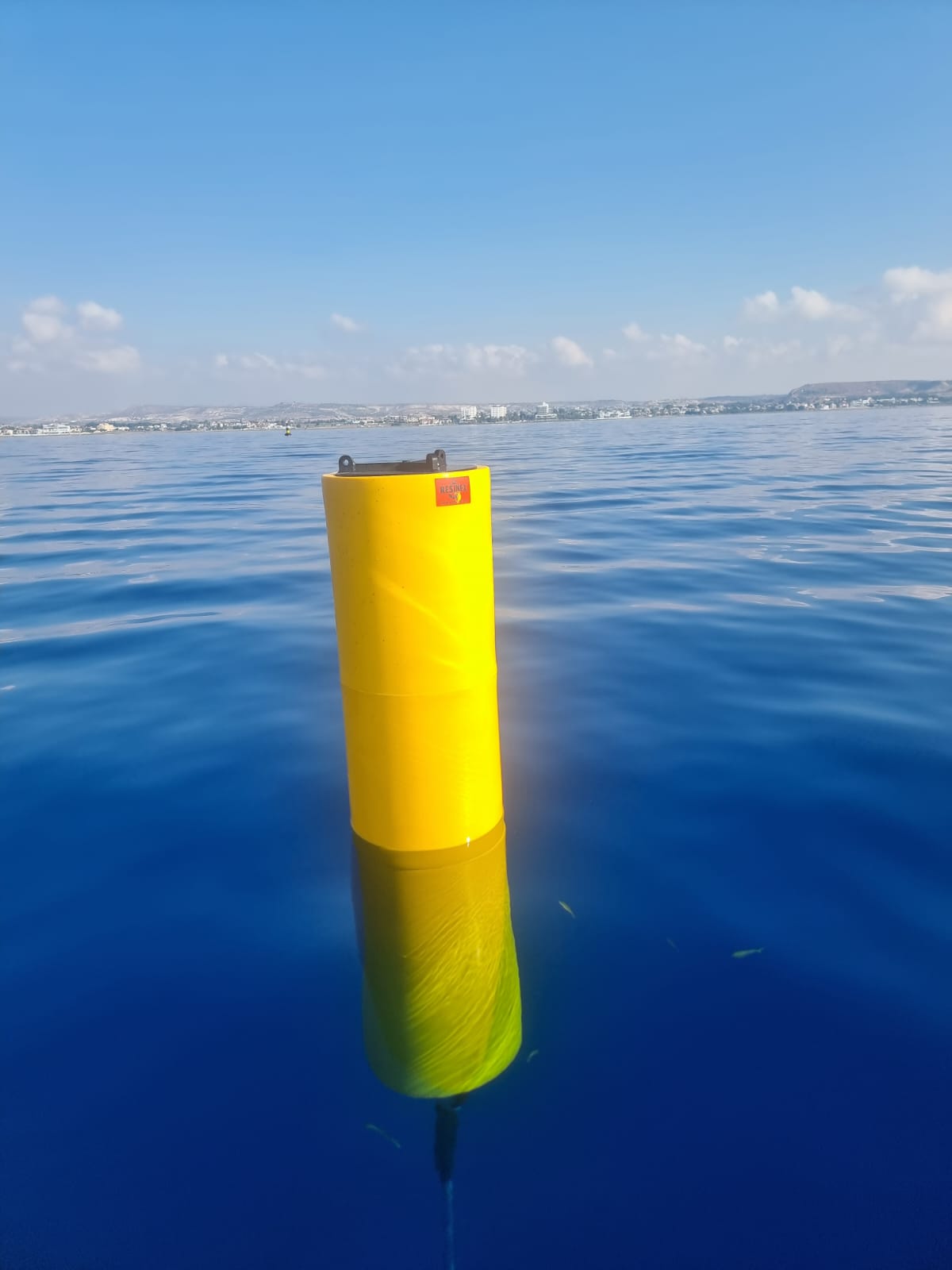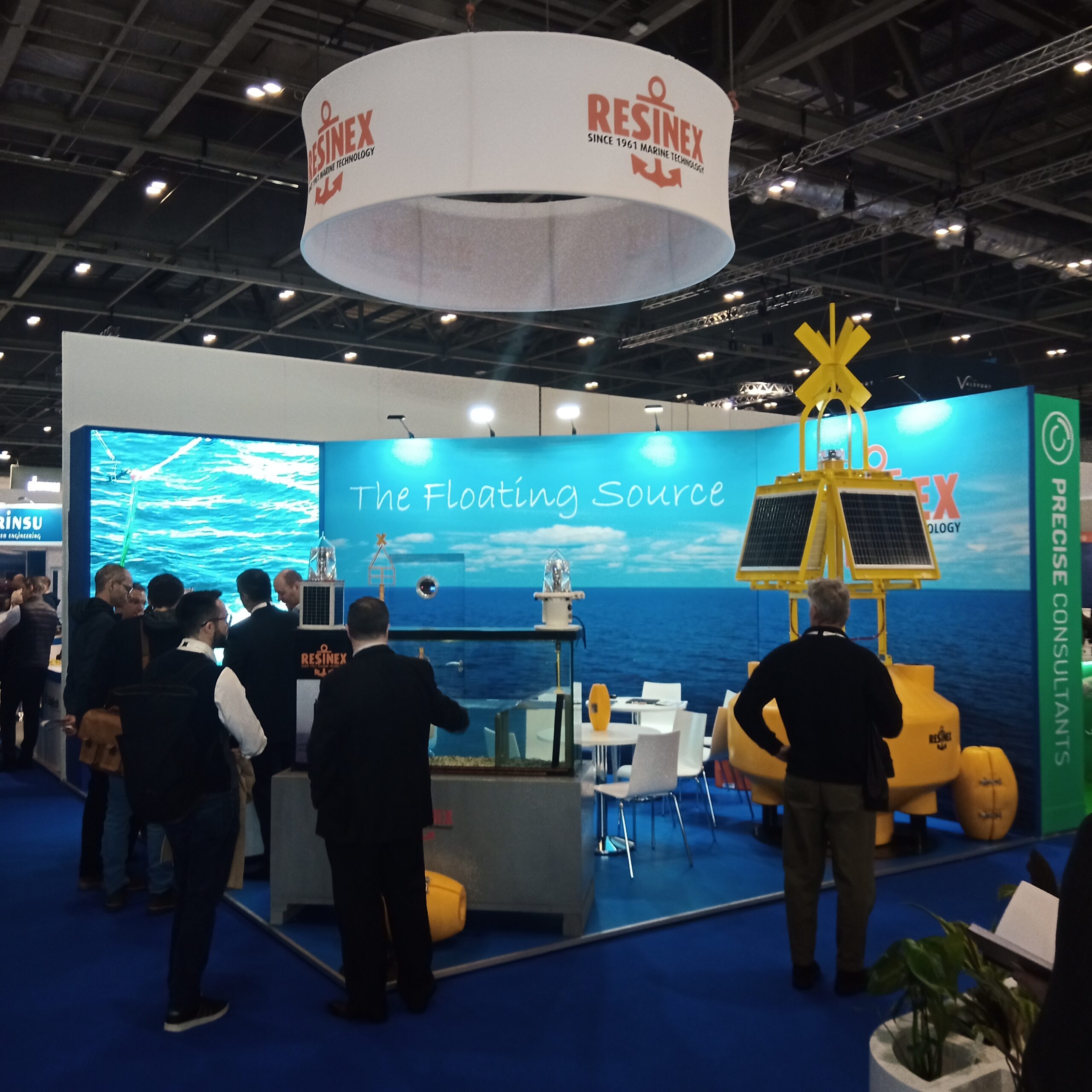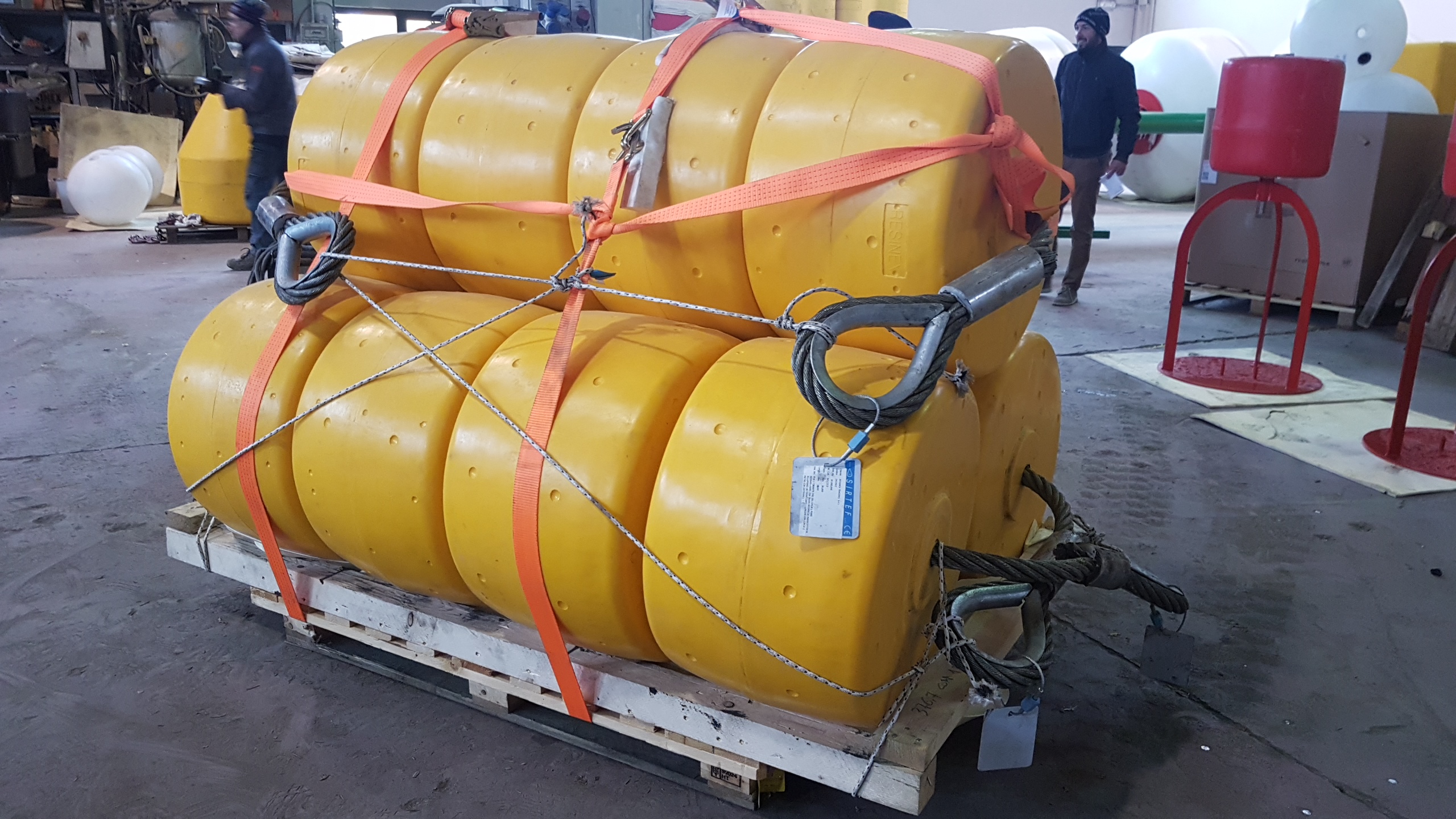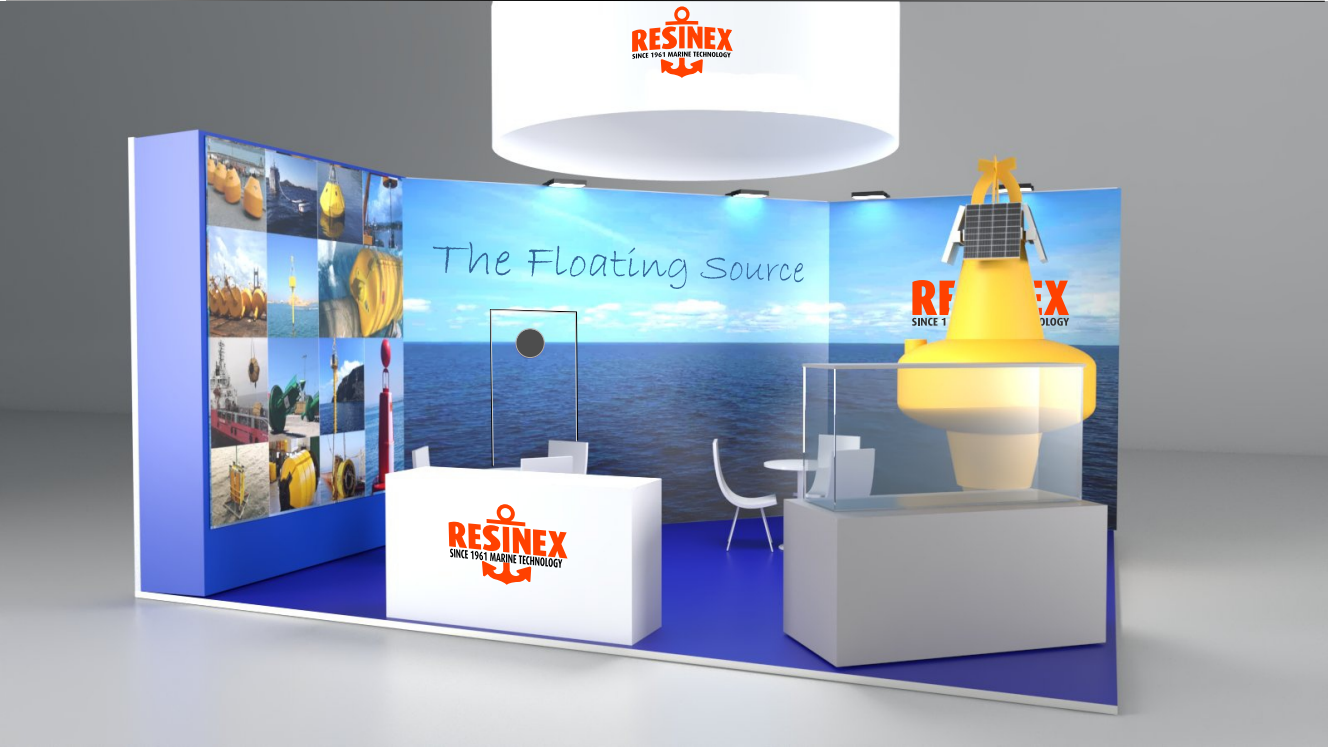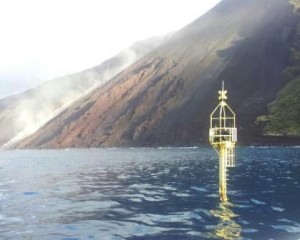 The University of Florence Department of Science on behalf of the Italian Civil Protection has positioned off the coast of the island of Stromboli (southern Tyrrhenian sea) a Resinex elastic beacon equipped with a wave metre and hydro-acoustic system. The aim is to monitor the stability of the submerged flank of the Stromboli volcano, the famous “Sciara” of fire. In December 2002 a volcanic eruption did in effect produce an instability of the said “Sciara” of fire which, sliding into the sea (about 10 million cubic metres), created a tsunami wave which invested the southern Tyrrhenian sea causing substantial damage to all the Eolie islands as well as along the Calabrian and Sicilian coastlines.
The University of Florence Department of Science on behalf of the Italian Civil Protection has positioned off the coast of the island of Stromboli (southern Tyrrhenian sea) a Resinex elastic beacon equipped with a wave metre and hydro-acoustic system. The aim is to monitor the stability of the submerged flank of the Stromboli volcano, the famous “Sciara” of fire. In December 2002 a volcanic eruption did in effect produce an instability of the said “Sciara” of fire which, sliding into the sea (about 10 million cubic metres), created a tsunami wave which invested the southern Tyrrhenian sea causing substantial damage to all the Eolie islands as well as along the Calabrian and Sicilian coastlines.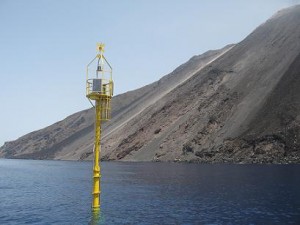 If the eruption had occurred during the holiday season, the damage to people and belongings would have been much more vast. Thanks to a dead weight of about 15 tons, connected by means of an anti-torsion cable, the beacon is anchored some 200 metres off the coast to a depth of 43-metres. Because of the particular conformation of the sea bed the positioning proved to be extremely testing. The profound depression of the “SCIARA” of fire runs along all the side of the volcano at about a 2000-metres depth with an average inclination of about 35-40 degrees. A small area of a few square metres was located where the dead weight was positioned. In order to prevent any possible shifting of the beacon, the standard anchoring system was integrated with the positioning of two 30-ton tetrapods upstream at about 70-metres from the beacon which in turn was joined to the dead weight by two steel cables. The set of instruments mounted on the Resinex beacon is made up of a large band hydrostatic pressure sensor, a water temperature sensor, a hydro-acoustic sensor (positioned at a 14-metres depth), two tiltmetres and a Gps (on the tower). The beacon is therefore able to provide immediately variables of hydrostatic pressure and consent the complete monitoring of marine fluctuations. The hydrophone, positioned at a 14-metres depth, is used to register any possible hydro-acoustic waves resulting from the underwater sliding of the volcano and which propagates in the water at speeds of 1,500 metres per second. The Gps receiver ensures the correct temporal synchronization of all data on board and monitors the geographical position. All the equipment on board is monitored by an electronic control system totally developed by the National Institute of Applied Optics of Florence in collaboration with Bioage S.r.l. The signals transmitted by the beacon also contain a series of diagnostic parameters which enable the immediate and continuous monitoring of the on board instrumentation and timely maintenance procedures. The entire monitoring system is powered by three solar panels but has the capacity to operate autonomously for long periods (about 6 months) without the aid of the panels. From the Resinex beacon, the data are transmitted via radio-modem in “real time” to the Civil Protection Advanced Operations Centre (COA) on the island of Stromboli. In turn the said data are also sent via Internet (always in “real time”) to the civil Protection in Rome and to the Florence Land Department of Science of Experimental Geophysics.
If the eruption had occurred during the holiday season, the damage to people and belongings would have been much more vast. Thanks to a dead weight of about 15 tons, connected by means of an anti-torsion cable, the beacon is anchored some 200 metres off the coast to a depth of 43-metres. Because of the particular conformation of the sea bed the positioning proved to be extremely testing. The profound depression of the “SCIARA” of fire runs along all the side of the volcano at about a 2000-metres depth with an average inclination of about 35-40 degrees. A small area of a few square metres was located where the dead weight was positioned. In order to prevent any possible shifting of the beacon, the standard anchoring system was integrated with the positioning of two 30-ton tetrapods upstream at about 70-metres from the beacon which in turn was joined to the dead weight by two steel cables. The set of instruments mounted on the Resinex beacon is made up of a large band hydrostatic pressure sensor, a water temperature sensor, a hydro-acoustic sensor (positioned at a 14-metres depth), two tiltmetres and a Gps (on the tower). The beacon is therefore able to provide immediately variables of hydrostatic pressure and consent the complete monitoring of marine fluctuations. The hydrophone, positioned at a 14-metres depth, is used to register any possible hydro-acoustic waves resulting from the underwater sliding of the volcano and which propagates in the water at speeds of 1,500 metres per second. The Gps receiver ensures the correct temporal synchronization of all data on board and monitors the geographical position. All the equipment on board is monitored by an electronic control system totally developed by the National Institute of Applied Optics of Florence in collaboration with Bioage S.r.l. The signals transmitted by the beacon also contain a series of diagnostic parameters which enable the immediate and continuous monitoring of the on board instrumentation and timely maintenance procedures. The entire monitoring system is powered by three solar panels but has the capacity to operate autonomously for long periods (about 6 months) without the aid of the panels. From the Resinex beacon, the data are transmitted via radio-modem in “real time” to the Civil Protection Advanced Operations Centre (COA) on the island of Stromboli. In turn the said data are also sent via Internet (always in “real time”) to the civil Protection in Rome and to the Florence Land Department of Science of Experimental Geophysics.

